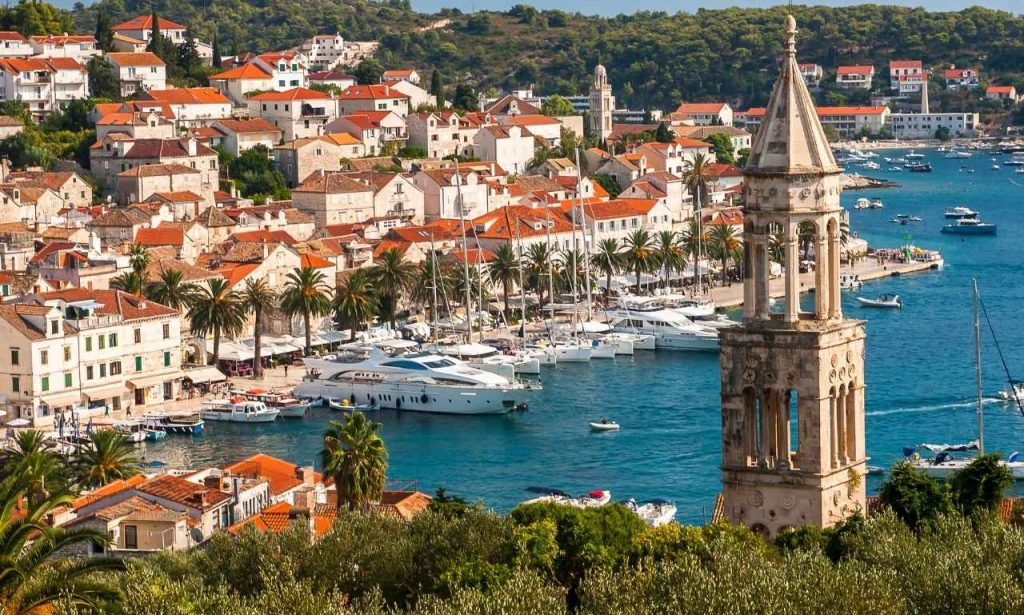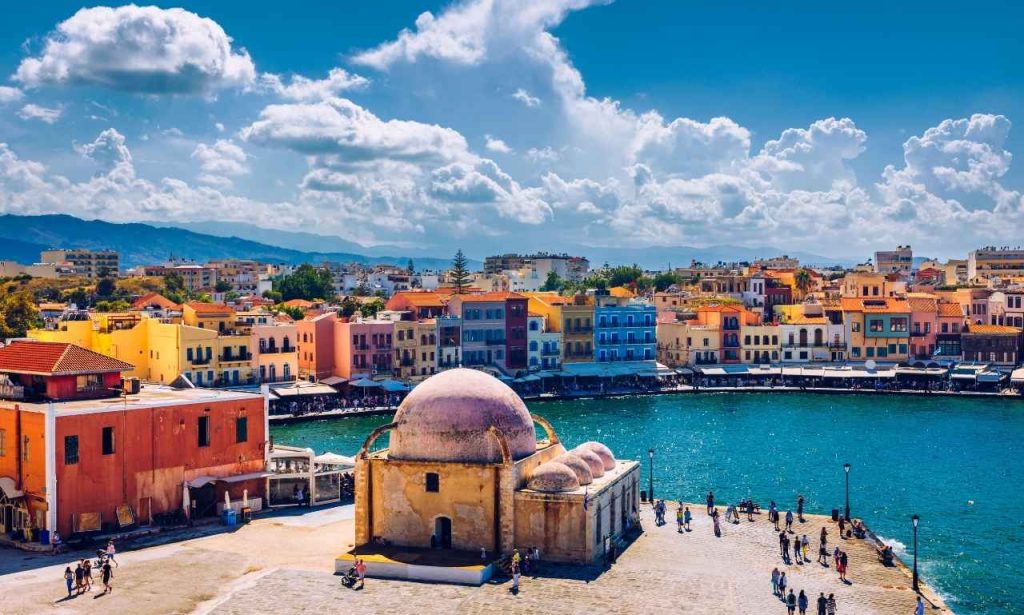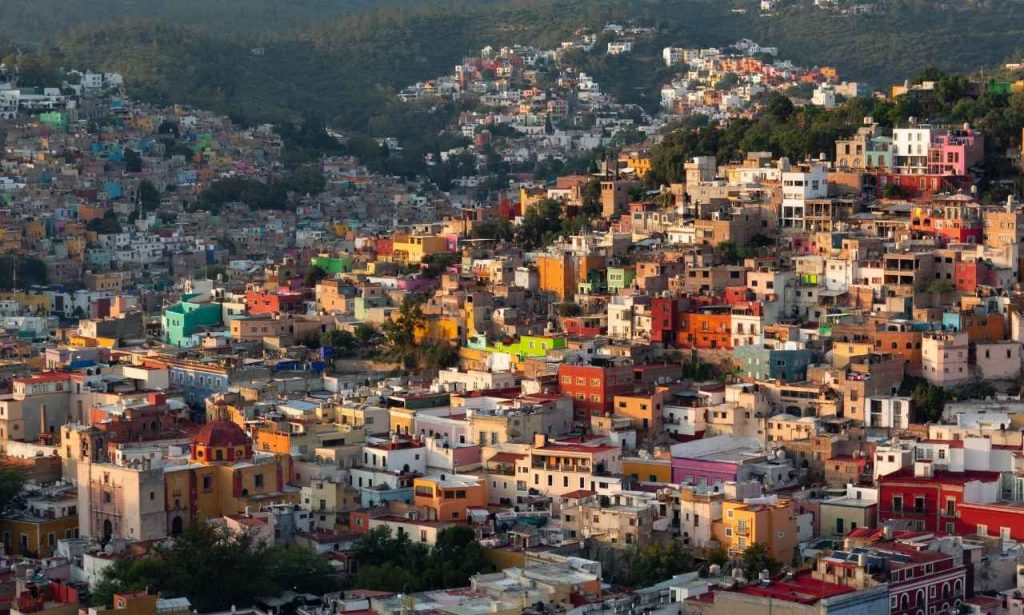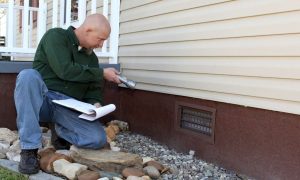Buying a vacation home remains one of the smartest investment decisions today. I’ve spent years researching real estate markets worldwide. The right property can provide both personal enjoyment and substantial rental income. Vacation homes offer an escape from daily life and a chance to build lasting family memories. They also serve as income-generating assets when you’re not using them.
Market trends show increasing demand for vacation rentals worldwide. More travelers now prefer the space and amenities of private homes over hotels. This shift creates opportunities for savvy investors to capitalize on popular destinations. The pandemic changed how people travel and work, boosting interest in vacation properties.
Hvar, Croatia

My first trip to Hvar happened by accident. Ten years ago, a missed ferry connection stranded me there overnight. That happy mistake led to a love affair with Croatia’s sunniest island. Old stone buildings line narrow streets that wind toward the sparkling Adriatic. Lavender scents the air during the summer months. Locals still fish each morning and sell their catch at the harbor.
Ownership here costs much less than similar Mediterranean spots. You’ll pay around €150,000 for a decent one-bedroom apartment near town. Restored stone houses in the countryside start around €200,000. Beachfront villas command higher prices but still beat comparable properties in Italy or France.
Investment Potential
My friend Tom purchased a small stone cottage here in 2017. He spent €120,000 on renovations and another €50,000 on the property. “I rent it just 16 weeks a year,” he told me. That covers my annual costs plus some profit.” His property is now valued at around €220,000—not bad for five years.
Croatia simplified foreign ownership rules when joining the EU. Americans, Canadians, and most Europeans can buy directly now. Summer rental rates run €150-€300 per night for nice properties. Even modest homes book solidly from June through September. Spring and fall bring fewer visitors but steady bookings from travelers seeking authentic experiences.
Lifestyle Benefits
Hvar gives you that perfect European island lifestyle without breaking the bank. Fresh seafood dinners cost half what you’d pay in Western Europe. Local wines surprise visitors with their quality and value. Year-round residents readily welcome foreigners who respect local customs. Many shop owners speak excellent English.
The island stays lively from April through October. Winter brings peaceful quiet but never feels completely deserted. The central location makes exploring other Croatian islands easy. Split airport offers direct summer flights from major European cities. Ferry connections run year-round with increased service during peak months.
Chiang Mai, Thailand
“You’ll either love it immediately or wonder what the fuss is about,” my Thai friend Somchai warned before my first visit. He was right – Chiang Mai isn’t for everyone. But those who connect with its energy often return repeatedly. Ancient temples share streets with hipster coffee shops. Street food vendors cook alongside upscale restaurants. The mountains create a backdrop that changes colors throughout the day.
Property costs seem almost unreal to Western buyers. Nice one-bedroom condos near the popular Nimman area start around $50,000. Two-bedroom places in modern buildings with pools generally run $80,000-$120,000. Houses with gardens in gated communities start around $150,000.
Investment Potential
Thailand restricts foreign land ownership but allows condo purchases. Buyers must use cash since financing options rarely exist for foreigners. Management companies handle everything for absent owners. They typically charge 15-20% of the rental income. Returns average 5-7% annually after expenses.
My college roommate bought a small condo here in 2018. He paid $65,000 for a one-bedroom unit near the night market. It rents consistently to a mix of tourists and digital nomads. His annual return averages 6.5% after all costs. The property hasn’t appreciated much, but the steady income keeps him happy.
Lifestyle Benefits
Living costs remain remarkably low despite the growing popularity. A couple can live very comfortably on $2,000 monthly. That includes regular massages and dining out. Medical care meets international standards at a fraction of Western prices. Bangkok Hospital’s Chiang Mai branch provides excellent care with English-speaking doctors.
The weather has three distinct seasons. The cool season (November- February) brings comfortable days and light jacket evenings. The hot season (March—May) tests your tolerance for heat. The rainy season (June- October) delivers afternoon showers but rarely all-day downpours. The international airport connects directly to major Asian hubs. Most visitors need just one connection from North America or Europe.
Algarve Region, Portugal
I first visited Portugal’s southern coast in the 1990s. Back then, British retirees dominated the expat scene. Today’s Algarve attracts a more diverse crowd. Young digital workers mix with retirees from across Europe and North America. The 100-mile coastline offers everything from bustling towns to quiet fishing villages. Dramatic cliffs and hidden beaches characterize the western areas. Flatter, sandier shores dominate the east.
Property prices rose steadily over recent years but remain reasonable. Apartments near popular beaches start around €150,000. Townhouses in nice communities range from €200,000 to €350,000. Villas with pools and sea views generally command €400,000 and up. The market shows stability rather than wild speculation.
Investment Potential
My neighbors sold their Chicago condo and bought here four years ago. They paid €280,000 for a three-bedroom townhouse near Carvoeiro. “We rent it 20 weeks yearly while traveling elsewhere,” they explained. Their income covers annual expenses plus their trips. Summer weekly rates reach €1,500 for their property.
Portugal’s tax system offers advantages for foreign residents. The Non-Habitual Resident scheme provides tax breaks for qualifying individuals. Property taxes run lower than in most Western European countries. Management companies efficiently handle rentals for owners who live elsewhere. Their typical fees range from 15% to 25% of rental income.
Lifestyle Benefits
Year-round pleasant weather tops the list of lifestyle perks. Winter temperatures rarely drop below 50°F (10°C). Summer heat stays manageable thanks to Atlantic breezes. Indoor heating matters more than air conditioning in most homes. The climate permits outdoor dining nearly every day.
Healthcare meets high European standards. Both public and private systems serve the region well. Many doctors speak excellent English, especially in private clinics. International schools serve families with children. The infrastructure supports comfortable living with reliable utilities and good internet. Faro Airport connects directly to dozens of European cities year-round.
Punta Cana, Dominican Republic
My taxi driver laughed when I mentioned my first visit seventeen years ago. “Back then, just cows and coconuts,” he joked. Punta Cana’s transformation amazes anyone who knew it before. Massive resorts line some beaches, while others remain nearly untouched. New highways connect once-isolated areas. Shopping centers, medical clinics, and international restaurants have multiplied.
Property options range from budget to ultra-luxury. Basic one-bedroom condos within driving distance to beaches start around $100,000. Newer units in beachfront complexes generally run $200,000 to $400,000. Private villas in gated communities command $300,000 to $1 million-plus. Construction quality varies wildly, so careful inspection matters.
Investment Potential
My client Rosa bought a two-bedroom condo here in 2019. She paid $225,000 for a unit five minutes’ walk from Bavaro Beach. Her property generates around $20,000 annually after expenses. Occupancy rates average 65% yearly, with peak season hitting 90%. Management fees typically run 25-30% of gross income.
The Dominican Republic welcomes foreign buyers with minimal restrictions. Property rights receive constitutional protection. Closing costs run higher than many expect, typically adding 5-7% to purchase prices. The rental market thrives with both short-term vacationers and winter snowbirds. The high season runs from December through April, with secondary peaks around major holidays.
Lifestyle Benefits
“Every day feels like Saturday,” my expat friend Mark often says about life here. Beach access defines the Punta Cana lifestyle. Various communities offer different atmospheres. Some cater primarily to vacationers, while others house more permanent residents. Groceries cost slightly more than in the US for imported items. Local fruits, vegetables, and seafood remain bargains.
Healthcare continues improving but doesn’t yet match US standards for complex issues. Many residents fly to Miami for serious medical concerns. Several good international schools serve the growing expat community. The international airport handles direct flights from dozens of cities across North America and Europe. Most visitors don’t need rental cars since taxis and tour services run efficiently.
Abruzzo, Italy
“You want real Italy? Go to Abruzzo,” an Italian friend advised years ago. His words proved true. This region remains refreshingly authentic. You won’t find tourist crowds or inflated prices here. Three national parks protect stunning mountain landscapes. Medieval villages perch on hilltops overlooking valleys of vineyards and olive groves. The Adriatic coastline offers miles of beaches ranging from sandy shores to dramatic pebble coves.
Property prices make Tuscan real estate agents blush. Village houses needing work can sell for under €40,000. Restored townhomes generally range from €80,000 to €150,000. Farmhouses with land typically cost €150,000 to €300,000. Coastal apartments start around €100,000 for modest units. Construction quality generally holds up well in this earthquake-prone region.
Investment Potential
My former colleague Sarah bought a small stone house in a mountain village four years ago. She paid just €55,000 plus spent another €45,000 on renovations. “It rents consistently from June through September,” she reports. Summer weekly rates run €600-€800 for her two-bedroom property. She breaks even financially while enjoying several personal visits yearly.
The rental market focuses primarily on summer months. Italian vacationers fill coastal areas in July and August. Foreign tourists increasingly discover the region’s interior. Winter sports create seasonal rental opportunities in mountain areas. Management options exist but with fewer professional companies than in more developed markets.
Lifestyle Benefits
Abruzzo offers that dream Italian lifestyle at startlingly affordable prices. A couple can live well here on €2,000 monthly. Restaurant meals cost 30-50% less than in tourist regions. Markets overflow with local produce, cheeses, and meats. Locals still follow traditional seasonal rhythms. Food remains central to community life and celebrations.
Medical care meets good European standards in larger towns. Smaller villages have limited services but regional hospitals provide comprehensive care. Few locals speak English outside tourist areas, so learning basic Italian helps tremendously. The nearest international airports are Rome (2-3 hours’ drive) and Pescara (smaller, with limited flights). Excellent highways connect the region to the rest of Italy.
Borovets, Bulgaria
“Bulgaria? Really?” That’s how friends typically react when I mention this destination. Most Americans couldn’t place Bulgaria on a map. Yet this small Balkan nation offers truly extraordinary value. Borovets ranks as the country’s oldest and most established ski resort. The base sits just over an hour from Sofia’s international airport. Ski runs descend from 8,530 feet, offering terrain for various skill levels.
Property prices seem almost fictional compared to Western European ski areas. Studio apartments in ski-in locations start under €30,000. One-bedroom units typically range from €40,000 to €60,000. Larger apartments and chalets generally cost €70,000 to €150,000. New construction continues alongside renovations of older buildings.
Investment Potential
My ski buddy Alex bought a one-bedroom apartment here in 2018. He paid €45,000 for a fully furnished unit near the gondola. “It rents about 12 weeks yearly,” he says. His annual income covers costs and generates modest profit. Winter rental rates run €50-€100 daily, depending on the date. Summer brings fewer visitors, but mountain biking is growing in interest.
Bulgaria imposes no restrictions on foreign ownership. Property taxes and maintenance fees run extremely low by European standards. Management companies handle rentals efficiently, typically charging 15-20% of income. The winter season generally runs December through March, with Christmas and February school holidays bringing peak rates.
Lifestyle Benefits
Borovets delivers true four-season mountain living at bargain prices. Winter brings reliable snow and uncrowded slopes. Lift tickets cost one-third of Alpine prices. Ski schools offer excellent instruction in various languages. Summer transforms the area into a green playground. Hiking trails, mountain biking routes, and fishing spots attract outdoor enthusiasts.
The resort area provides restaurants, shops, and essential services. Larger towns within 30 minutes offer more shopping options. Medical facilities handle routine issues, while Sofia provides more specialized care. English is widely understood in tourist areas. The combination of accessibility, affordability, and natural beauty makes this underappreciated gem worth considering.
Crete, Greece

My first Cretan meal lasted four hours. That perfectly captures the island’s approach to life. Nobody rushes here. Greece’s largest island offers remarkable diversity. Ancient ruins reveal 4,000 years of civilization. Mountains rise dramatically from the sea. Beaches range from organized tourist spots to hidden coves accessible only by boat. Villages maintain traditions passed down through generations.
The property market recovered strongly after Greece’s financial crisis. Village houses needing renovation start around €60,000. Restored traditional homes generally range from €120,000 to €200,000. New apartments near popular beaches typically cost €150,000 to €300,000. Luxury villas with sea views start around €350,000 and climb significantly higher in prime locations.
Investment Potential
My Greek-American friend Eleni bought her grandfather’s village home in 2016. She invested €40,000 in renovation after purchasing it for €70,000. “It rents steadily from April through October,” she reports. Her three-bedroom property commands €900-€1,200 weekly during the summer. The location near both beaches and mountains appeals to diverse visitors.
Greece welcomes foreign buyers but requires careful attention to documentation. The economic struggles created buying opportunities that continue today. The tourist season runs longer than on smaller Greek islands. Shoulder seasons (April- May and September- October) bring pleasant weather and steady visitors. Management companies serve most popular areas, typically charging 20-25% of rental income.
Lifestyle Benefits
Crete offers the Mediterranean’s best combination of authenticity and convenience. The island maintains a strong cultural identity while providing modern amenities. Fresh food dominates local cuisine, with olive oil, vegetables, and seafood taking center stage. Local wines continue improving, with native grape varieties creating distinctive flavors.
Healthcare meets good European standards in major cities like Heraklion and Chania. International schools serve families with children. English is widely understood in tourist areas. Two international airports connect the island to numerous European destinations. Ferries link Crete with Athens and other Greek islands. The climate stays mild year-round, with snow appearing only on mountain peaks.
Riviera Maya, Mexico

Over twenty years of visits, I watched this coastline transform. What was once a string of fishing villages has become a significant tourism corridor. The development has both positive and negative aspects. Infrastructure improved dramatically. Restaurant and shopping options have expanded enormously. Yet some areas lost their original character amid rapid growth. The 80-mile stretch from Cancun to Tulum offers varied environments and property options.
Real estate prices range widely. Basic condos in Playa del Carmen start around $120,000. Beachfront units typically cost $300,000 to $800,000. Single-family homes in gated communities generally range from $200,000 to $500,000. Luxury properties easily reach multi-million dollar prices. Location dramatically impacts both cost and rental potential.
Investment Potential
My neighbor Jeff bought a two-bedroom condo in Playa del Carmen six years ago. He paid $195,000 for a unit ten blocks from the beach. “It generates enough to cover expenses plus some profit,” he says. Occupancy rates typically run 60-70% annually. Daily rates range from $100 in the low season to $250+ during holidays.
Foreign buyers must purchase properties near beaches through a bank trust (fideicomiso). This well-established system effectively protects ownership rights. Management companies abundantly serve the region, typically charging 20-30% of the rental income. Many owners successfully use online platforms for direct bookings. The rental market stays active year-round, with the high season running from December through April.
Lifestyle Benefits
Living here means embracing both Mexican culture and international influences. Fresh tropical fruits fill local markets year-round. Seafood restaurants serve catch delivered daily by local fishermen. The expat community provides newcomers with ready social connections. Many residents operate businesses that blend vacation vibes with practical services.
Healthcare continues improving with several good private hospitals in the region. International schools serve the growing permanent community. The weather stays warm year-round, with rainy season running from May through October. Hurricane risk exists from June through November, requiring appropriate insurance coverage. Cancun’s international airport handles direct flights from dozens of North American and European cities.
Conclusion
Buying a vacation home means finding your personal sweet spot between lifestyle goals and financial sense. Each location on this list offers distinct advantages. Your choice will guide your budget, preferred activities, and comfort with different cultures. Consider renting in your target location before buying. This strategy lets you experience different seasons and neighborhoods.
Remember that vacation home ownership brings responsibilities along with pleasures. Local property managers become your essential partners when you’re away. Tax implications require careful planning with professionals familiar with your home country and the property location. Immigration rules may limit your stay durations if you’re not seeking permanent residency.
The vacation home market continues evolving as remote work reshapes possibilities. Properties offering strong internet and comfortable workspaces command premium prices. Locations within relatively easy reach of major airports gain an advantage. The right purchase rewards owners with both personal enjoyment and potential financial returns.
Also Read: Front Porch Decorating Ideas for Spring
FAQs
Most countries require larger down payments from foreigners, typically 30-50% of the purchase price.
European locations generally charge higher property taxes than Asian or Caribbean options.
Each country uses different systems, from direct ownership to trust arrangements like Mexico’s fideicomiso.
Professional management proves essential for maximizing income and proper property maintenance.
Coastal and tropical areas require specific natural disaster coverage beyond standard policies.



